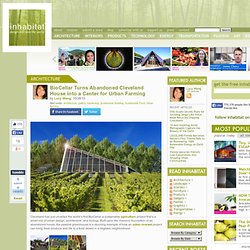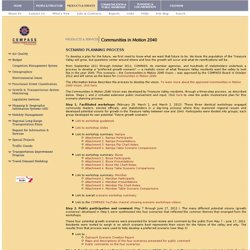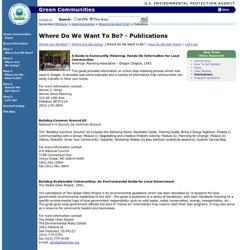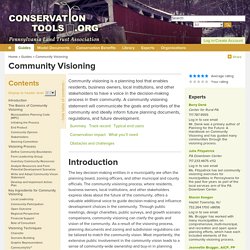

A Brief Explanation of Ethnographic Futures Research. Mobile technology utilization for social development in developing countries: An ethnographic futures research study - Online First. Innovative BioCellar Recycles Cleveland's Abandoned Houses into Centers for Urban Farming. Cleveland has just unveiled the world’s first BioCellar, a sustainable agriculture project that’s a smart mix of urban design, architecture, and biology.

Built upon the masonry foundation of an abandoned house, the passive greenhouse is a stunning example of how an urban renewal project can bring fresh produce and life to a food desert in a blighted neighborhood. In East Cleveland, one out of every five properties is abandoned. To combat the challenge of vacant housing, local permaculture designer Jean Loria proposed the BioCellar, a sustainable solution that redevelops abandoned property into hotspots for urban farming.
Combining the concept of a root cellar with a greenhouse, BioCellar reuses one of the most valuable parts of a building, its foundation, as the base for a new greenhouse. Additional low impact development practices will be used throughout the facility for educational demonstrations and community use. . + Neighborhood Solutions Images via Mansfield Frazier.
Transportation for Communities - Framework Application. COMPASS - Products & Services - Communities in Motion 2040. To develop a plan for the future, we first need to know what we want that future to be.

We know the population of the Treasure Valley will grow, but questions center around where and how the growth will occur and what its ramifications will be. From September 2011 through October 2012, COMPASS, its member agencies, and hundreds of stakeholders undertook a process to develop a "preferred growth scenario" ― a realistic vision of what Treasure Valley residents want the valley to look like in the year 2040. This scenario – the Communities in Motion 2040 Vision – was approved by the COMPASS Board in October 2012 and will serve as the basis for Communities in Motion 2040 . The information below describes the process to develop the vision. To learn more about the approved Communities in Motion 2040 Vision, click here .
The Communities in Motion 2040 Vision was developed by Treasure Valley residents, through a three-step process, as described below. Planing for the Future: A Handbook on Community Visioning (3rd. ed.) Where Do We Want To Be? - Publications. A Guide to Community Visioning: Hands-On Information for Local Communities American Planning Association - Oregon Chapter, 1993.

This guide provides information on a four-step visioning process which was used in Oregan. It provides real world examples and a variety of information that communities can easily transfer to their own needs. For more information contact: Steven C. Ames Steven Ames Planning 325 SE 14th Ave. Portland, OR 97214 (503) 235-3000 Building Common Ground Kit National 4-H Council, On Common Ground. The "Building Common Ground" kit includes the following items: Facilitator Cards, Training Guide, Bring a Group Together: Module I; Communicating with a Group: Module II; Negotiating and Creative Problem Solving: Module III; Planning for Change: Module IV; Videos; Diskette: Know Your Community; Cassette: Workshop Medley (to play between workshop sessions); Custom Canvas Bag.
Www.nh.gov/oep/resourcelibrary/referencelibrary/m/masterplan/preparingamasterplan/documents/chapter12.pdf. Reinventing courts for the 21st century: Designing a vision process. Where Do We Want To Be? - Tools. "The Indicators a society chooses to report to itself about itself are surprisingly powerful.

They reflect collective values and inform collective decisions. A nation that keeps a watchful eye on its salmon runs or the safety of its streets makes different choices than does a nation that is only paying attention to its GNP. The idea of citizens choosing their own indicators is something new under the sun-something intensely democratic. " Donella Meadows, co-author of "Beyond the Limits" Envisioning the future of your community can be a powerful experience. Refer to U.S. Below are examples of visioning techniques, real-world vision statements from working communities and "benchmarks" or indicators that can mark the progress toward achieving your vision.
Www.nj.gov/state/planning/docs/communityvisioningstandards.pdf. Anew NZ. Www.coffsharbour.nsw.gov.au/Coffs-And-Council/our-future/Documents/Vision_2030_background_document_A.pdf. Community Visioning - Conservation Tools. The key decision-making entities in a municipality are often the planning board, zoning officers, and other municipal and county officials.

The community visioning process, where residents, business owners, local institutions, and other stakeholders express ideas about the future of the community, offers a valuable additional voice to guide decision-making and influence development choices in the community. Through public meetings, design charrettes, public surveys, and growth scenario comparisons, community visioning can clarify the goals and vision of the community. As a result of the visioning process, planning documents and zoning and subdivision regulations can be tailored to match the community vision. Most importantly, the extensive public involvement in the community vision leads to a sense of community-wide ownership and buy-in in planning documents and projects.
Municipalities Planning Code (MPC) Initiating the Process End Product Community Opinion Stakeholders Steering Committee.